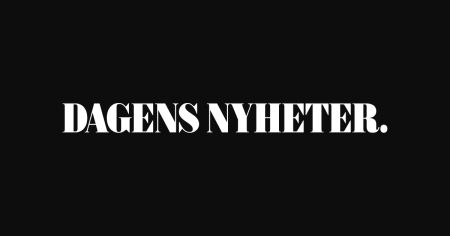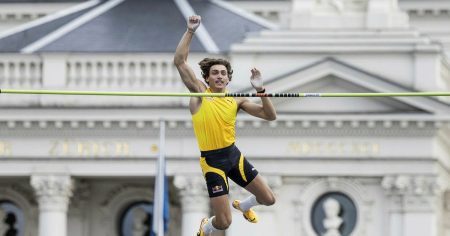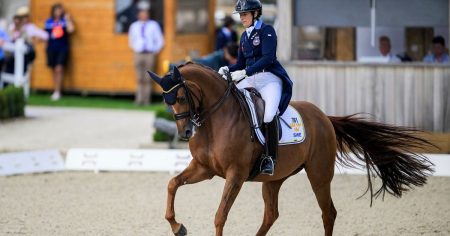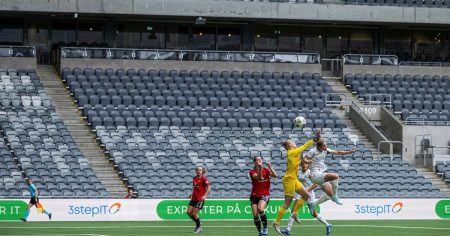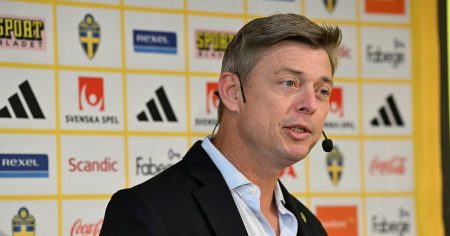The unfortunate incident involving Swedish equestrian Peder Fredricson and his horse, Alcapone des Carmille, during a show jumping competition unfolded in a rather unusual manner. As Fredricson approached a jump, his horse’s head inadvertently struck the support structure of the obstacle, causing the entire barrier to collapse. This unexpected event, rarely seen at such a high level of competition, disrupted the flow of the course and ultimately impacted Fredricson’s performance. While such incidents can occur at any level of equestrian sport, their likelihood decreases significantly at higher tiers due to the heightened experience and precision of both horse and rider. The very nature of show jumping, with its intricate courses and demanding jumps, presents inherent risks. Obstacles, designed to test the partnership between horse and rider, are constructed with careful consideration given to safety standards. However, unforeseen circumstances, such as a slight miscalculation or an unexpected movement by the horse, can sometimes lead to unexpected mishaps like the one Fredricson experienced.
The consequence of the collapsed jump was a significant disruption to the rhythm and timing of Fredricson’s round. He was already committed to the next obstacle when the incident occurred and had to continue riding while the fallen jump, the final one on the course, was being reconstructed. This enforced interruption likely impacted both Fredricson and his horse, breaking their concentration and potentially unsettling the horse’s confidence. Show jumping requires a delicate balance of precision, timing, and trust between horse and rider. A sudden disruption, such as a falling jump, can easily upset this balance, affecting the horse’s focus and the rider’s ability to maintain control and execute the subsequent jumps effectively.
Due to the time required to rebuild the obstacle, the clock was stopped, allowing Fredricson to compose himself and his horse as he walked around the arena. This pause in the competition underscores the importance of ensuring fair and safe conditions for all participants. The judges and officials acted appropriately by halting the timer, recognizing that Fredricson should not be penalized for a circumstance beyond his control. While the delay allowed for the reconstruction of the jump and provided Fredricson with an opportunity to regain his composure, it also added an element of pressure and anticipation to the final jump.
Upon the re-erection of the final obstacle, Fredricson successfully cleared the jump, demonstrating his and his horse’s resilience and adaptability. However, the earlier incident had already taken its toll. It was later revealed that Fredricson had sustained a muscle tear during the disruption, an injury that ultimately prevented him from participating in the subsequent jump-off round. This unfortunate outcome highlights the physical demands of show jumping and how even seemingly minor incidents can have significant consequences. The sport requires not only technical skill and precise control but also physical strength and stamina from both horse and rider. A muscle tear, even a minor one, can significantly impair a rider’s ability to perform at their peak, especially in the demanding environment of a high-level competition.
The competition also saw another Swedish rider, Wilma Hellström, facing challenges on the course. Hellström’s performance was marred by accumulating eight faults, prompting her to make the difficult decision to retire from the competition. In show jumping, accumulating faults signifies errors in navigating the course, such as knocking down rails or exceeding the allotted time. Eight faults represent a significant setback, making it challenging to remain competitive, particularly in a high-stakes event. Hellström’s decision to retire, while undoubtedly disappointing, demonstrates a responsible approach. Recognizing the limitations of her performance on that particular day, she prioritized the well-being of her horse and opted not to continue under less than optimal conditions.
The day’s events underscore the unpredictable nature of equestrian sports, where even the most experienced riders and horses can encounter unforeseen challenges. Both Fredricson’s equipment malfunction and Hellström’s accumulated faults serve as reminders of the various factors that can influence outcomes in show jumping. The sport demands not only exceptional skill and athleticism but also adaptability and resilience in the face of unexpected events. Success hinges on a combination of preparation, precision, and a bit of luck, and on this particular day, fortune did not favor the Swedish riders. Nonetheless, their professionalism and dedication to the sport were evident in their handling of the challenges they faced.








